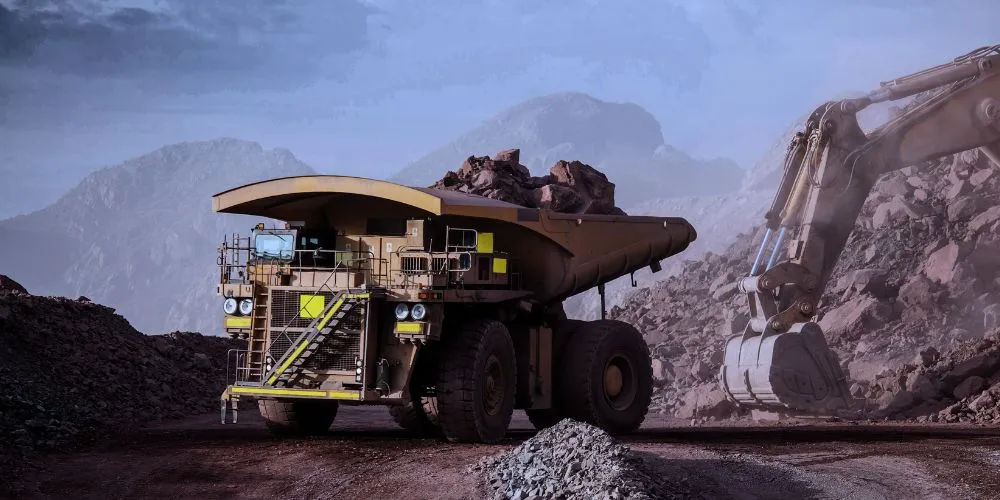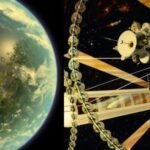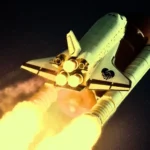Space mining has emerged as a revolutionary frontier in our ongoing cosmos exploration. It offers the potential to extract valuable resources from celestial bodies beyond Earth. In an era characterized by increasing demand for rare minerals, expanding our reach into space promises to meet these needs while opening up new possibilities for scientific discovery and sustainable resource utilization.
This comprehensive exploration delves into space mining, elucidating its significance, techniques, applications, and transformative potential for humanity’s future resource acquisition and exploration endeavors.
The Significance of Space Mining
Space mining signifies a paradigm shift in our approach to resource acquisition. It involves pursuing valuable resources such as water, minerals, and rare elements from celestial bodies, reducing the environmental impact of resource extraction on Earth, and ensuring a sustainable supply chain for future generations.
Resource Sustainability
One of the primary drivers of space mining is resource sustainability. As Earth’s finite resources become scarcer, space mining offers an alternative source of vital materials. For example, water extracted from asteroids or the Moon could be used to sustain future lunar bases or converted into hydrogen and oxygen for rocket fuel, reducing the need to transport these resources from Earth.
Expanding Scientific Knowledge
Space mining missions provide opportunities to expand our scientific knowledge about celestial bodies. As robotic probes and mining equipment explore the surfaces of asteroids, the Moon, or other planets, they collect invaluable data about these objects’ composition, geology, and history, contributing to our understanding of the solar system’s formation and evolution.
Supporting Space Exploration
Space mining has the potential to fuel future space exploration endeavors. By extracting resources in space, missions can refuel spacecraft, manufacture necessary equipment, and create a sustainable infrastructure for long-duration missions, making human exploration of Mars, asteroids, and beyond more feasible.
Techniques in Space Mining
Space mining relies on various innovative techniques and technologies to locate, extract, and process resources from celestial bodies.
Prospecting and Surveying
Before mining operations commence, prospecting and surveying missions are essential to identify resource-rich celestial bodies. Space agencies and private companies use telescopes, remote sensing instruments, and robotic missions to gather data about potential targets, including asteroid compositions and lunar resource deposits.
Autonomous Robotics
Space mining operations often employ autonomous robotic systems with drills, excavators, and material transporters. These robots can navigate the challenging terrain of asteroids or planetary surfaces, extract resources, and transport them to processing facilities, minimizing human intervention in hazardous environments.
In-Situ Resource Utilization (ISRU)
In-situ resource utilization involves processing extracted materials on-site to create usable products. For instance, water extracted from the Moon or asteroids can be split into hydrogen and oxygen for rocket propellant production, enabling sustainable transportation within the solar system.
Propellant Production
Space mining missions often focus on extracting water ice, which can be converted into hydrogen and oxygen for use as rocket fuels. This propellant production capability is critical for enabling deep-space exploration and reducing the cost of interplanetary missions.
Applications of Space Mining
Space mining has many applications, impacting resource acquisition, space exploration, and sustainable infrastructure development.
Resource Acquisition
The primary application of space mining is resource acquisition. Valuable resources such as water, platinum-group metals, and rare earth elements can be extracted and used in various industries, including aerospace, electronics, and manufacturing. The extraction of rare and valuable minerals from celestial bodies offers economic opportunities with the potential to create new industries and markets. The availability of these resources can also lead to a more diversified and resilient global supply chain.
Space Exploration Infrastructure
Space mining supports the development of infrastructure for future space exploration missions. By producing fuels and materials in space, missions can reduce their reliance on Earth-based resources and establish sustainable bases on celestial bodies. Infrastructure development in space is crucial to human colonization of other planets. Sustainable bases on the Moon or Mars, supported by space mining, can serve as stepping stones for further exploration and provide a platform for scientific research.
Satellite and Spacecraft Maintenance
Space mining can provide resources for satellite and spacecraft maintenance and repair. Refueling stations in space could extend the operational lifetimes of satellites and reduce the number of defunct objects in Earth’s orbit. The ability to refuel and repair satellites in orbit can revolutionize space operations. It can reduce the costs associated with satellite deployment and contribute to a more sustainable use of space.
Sustainable Energy Production
Space mining contributes to sustainable energy production in space. Extracting water ice for propellant production also provides drinking water for future lunar or Mars missions and can support life-support systems and agriculture. Sustainable energy production in space is critical to long-duration missions and establishing human habitats on celestial bodies. Water extracted from lunar or asteroid regolith can serve as a versatile resource for multiple purposes.
Challenges and Ethical Considerations
Space mining presents unique challenges and ethical considerations that must be carefully addressed to ensure responsible and sustainable resource utilization.
Environmental Impact
While space mining can potentially reduce the environmental impact of resource extraction on Earth, it could also create environmental concerns in space. Excavating and processing resources on celestial bodies may alter their natural environments and ecosystems. Preserving the pristine environments of celestial bodies is essential for scientific research and the potential discovery of extraterrestrial life. Space mining operations must take precautions to minimize their impact on these environments.
Property Rights and International Cooperation
Issues surrounding property rights and international cooperation in space mining are complex. The absence of a clear legal framework for resource ownership in space raises questions about property rights and equitable access to resources. Establishing international agreements and regulations is necessary to address these issues. Cooperation among space-faring nations can ensure responsible and fair resource utilization while preventing conflicts in space.
Space Debris and Orbital Congestion
As space mining operations increase, the potential for space debris and orbital congestion grows. Responsible debris management and collision avoidance are crucial to protecting operational satellites and spacecraft. Efforts to mitigate space debris and ensure safe orbital operations are essential for maintaining Earth’s orbital environment integrity. Collaboration among space agencies and organizations is necessary to develop effective debris management strategies.
Ethical Resource Extraction
Ethical considerations surround resource extraction from celestial bodies. Striking a balance between pursuing resources and preserving celestial bodies’ pristine environments is essential for responsible space mining. Resource extraction should be conducted to minimize environmental impact and respect celestial bodies’ scientific and cultural value. Ethical mining practices will be essential in shaping the future of space exploration and resource utilization.
The Future of Space Mining
Space mining is poised to play an even more substantial role in shaping the future of resource acquisition, space exploration, and sustainability.
Lunar and Martian Bases
Space mining will support the establishment of lunar and Martian bases. By extracting resources locally, these bases can become self-sustaining and serve as hubs for further solar system exploration. The development of lunar and Martian bases represents a significant step towards colonizing other celestial bodies. These bases will provide platforms for scientific research, technology development, and the preparation for deep-space missions.
Asteroid Mining
Asteroid mining missions are on the horizon. Companies and space agencies are planning missions to asteroids rich in precious metals, which offer the potential for significant economic returns. Exploring and utilizing asteroids represents a new frontier in resource acquisition. These missions will provide access to rare and valuable materials and expand our understanding of the solar system’s history and composition.
Interplanetary Transportation Hubs
Space mining will enable the creation of interplanetary transportation hubs. These hubs will facilitate missions to distant destinations by providing space refueling and resource processing capabilities. They will also reduce the cost and complexity of deep-space missions. Allowing spacecraft to refuel and resupply during their journeys will make exploring the outer reaches of our solar system and beyond possible.
Conclusion
Space mining represents a transformative frontier that promises to address Earth’s resource sustainability challenges while enabling future space exploration and colonization. Its significance lies in its potential to extract valuable resources, support space exploration, and advance our understanding of the cosmos. As space mining technology evolves, addressing challenges such as environmental impact, property rights, and ethical considerations will be imperative.
It envisions a future in which humanity ventures further into space, harnessing the riches of the cosmos to fuel our exploration and secure a sustainable future for generations to come. Space mining is the bridge to a future where the treasures of the universe are within our grasp, and the cosmos becomes a source of boundless opportunity for humanity.









